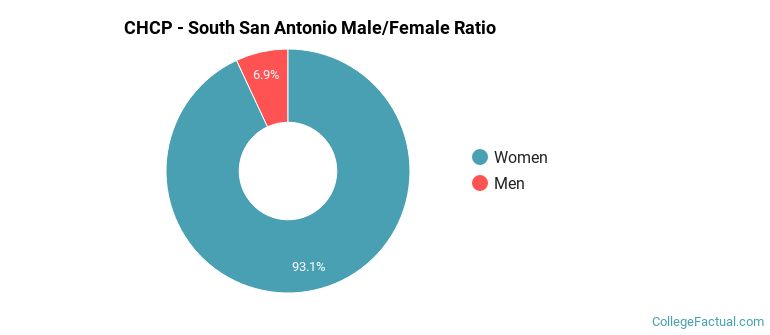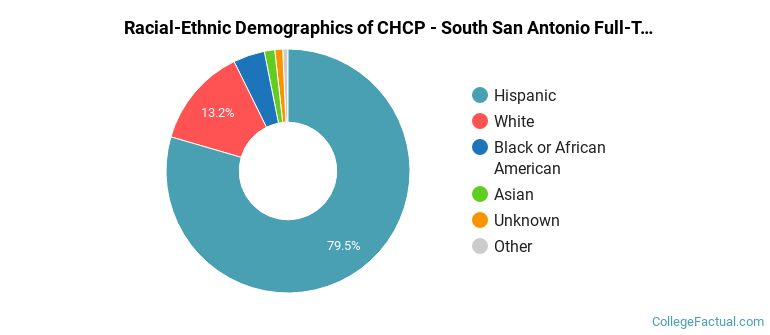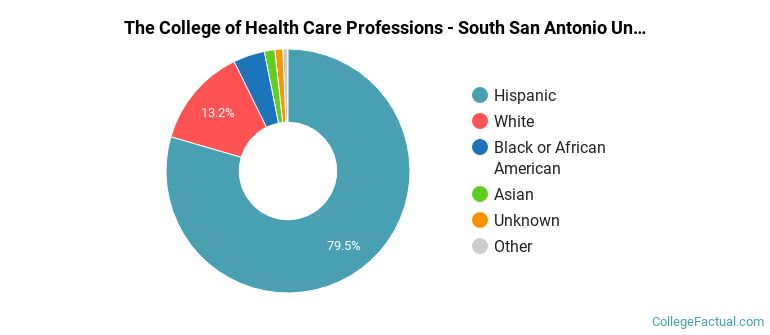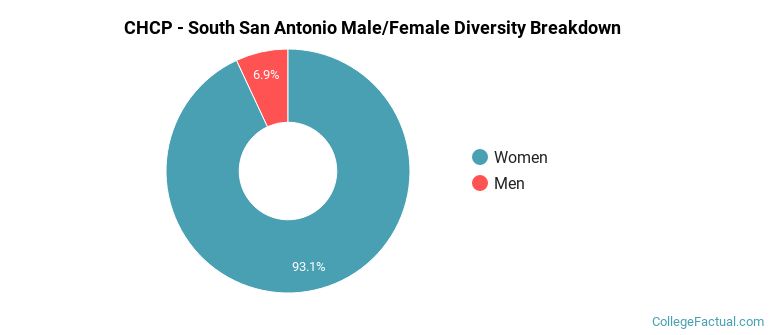 by our College Data Analytics Team
by our College Data Analytics TeamCHCP - South San Antonio total enrollment is approximately 375 students.
Male/Female Breakdown of Undergraduates
The full-time CHCP - South San Antonio undergraduate population is made up of 95% women, and 5% men.

For the gender breakdown for all students, go here.
CHCP - South San Antonio Racial/Ethnic Breakdown of Undergraduates

| Race/Ethnicity | Number |
|---|---|
| Hispanic | 304 |
| White | 46 |
| Black or African American | 16 |
| Unknown | 7 |
| Multi-Ethnic | 1 |
| Asian | 0 |
| Native Hawaiian or Pacific Islander | 0 |
| International | 0 |
See racial/ethnic breakdown for all students.

| Race/Ethnicity | Number |
|---|---|
| Hispanic | 304 |
| White | 46 |
| Black or African American | 16 |
| Unknown | 7 |
| Multi-Ethnic | 1 |
| Asian | 0 |
| Native Hawaiian or Pacific Islander | 0 |
| International | 0 |

There are approximately 357 female students and 18 male students at CHCP - South San Antonio.
Footnotes
*The racial-ethnic minorities count is calculated by taking the total number of students and subtracting white students, international students, and students whose race/ethnicity was unknown. This number is then divided by the total number of students at the school to obtain the racial-ethnic minorities percentage.
References
Department of Homeland Security Citizenship and Immigration Services
Learn more about how College Factual creates their Diversity Rankings.